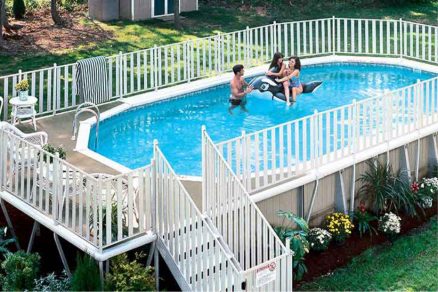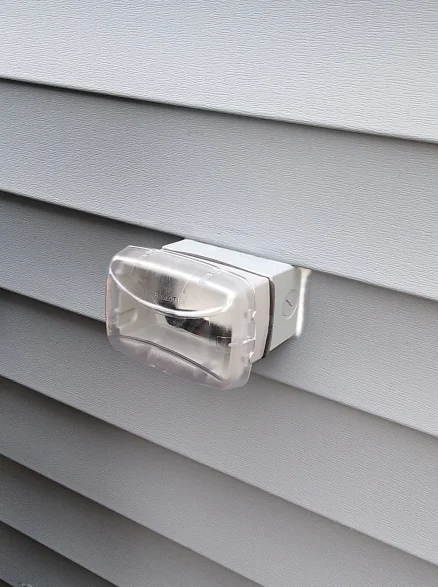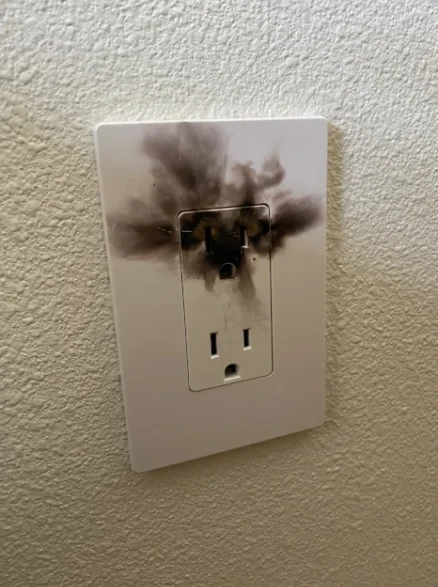Outlet Installations
I am a one-man shop, and as such your quality is guaranteed personally, by the owner, with direct service from the owner and no additional employees. For every job, I hang my name and reputation on the work I do, and I always strive to leave every customer fully satisfied at the end of the day. Furthermore, I am a fully trained licensed electrician, having completed a full apprenticeship, certified, insured, and bonded.
All of my work comes with a satisfaction guarantee and one-year warranty.
I am a residential electrical contractor with eleven years of experience in the trade. This is a local, small company with low overheads and affordable pricing, quick turnaround, and direct personal communication with the owner and registered electrician.
240V Outlet Installations
You want a licensed, insured, qualified electrician to do work on your own home, especially for 240V work, which carries far greater energy than the typical 15A receptacle. I can help ensure that your new outlet is safely installed and up to code. Each type of outlet below can carry its own unique considerations and code requirements, definitely not something to leave up to a handyman, cousin, or DIY.
High power outlets also carry increased load requirements for your entire electrical system, including the panel and service. You don't want to accidentally overload your entire main panel with a new outlet!
Common 240V Outlets Installed
- 240V Oven Outlets
- 240V Range Outlets
- 240V Dryer Outlets
- 240V EV Charger Outlets
- 240V Welder Outlets

Pool Outlets, Hot Tub Outlets
Did you know that swimming pool and hot tub installations have their own section in the electrical code? 14 pages to be precise, with 85 subsections! The electrical code does not take the potential electrocution hazards lightly, and neither should you - don't be mistaken into thinking installing power for any pool is as simple as plugging in a pump, there is much much more to it.
This is definitely something you want to hire a licensed electrical contractor to look over and install. Call me to set up a free appointment and discuss precisely what's required for your new pool.
POOL CONSIDERATIONS
- Pump outlet
- Heater outlet
- Metal perimeter bonding
- Soil & pathway bonding (yes!)
- Electrical device clearances for fans, lights, outlets, switches
- Depth and construction
Exterior Outlets
Exterior outlets can be simple but also easily installed poorly, leading to leaks in your home. All of my installations use proper weather-rated boxes and receptacles, and come with GFI protection. Strong attention to detail is used to prevent leaking, including caulking, weep holes, bubble covers, and gasketing.
A common error I come across is others installing non-weather-rated devices in exterior locations, leading to early failures. Yes, even the receptacle itself must be properly rated, even if it's within a bubble enclosure, for added reliability and longevity.
COMMON EXTERIOR OUTLETS
- Christmas light outlets
- A/C Outlets
- Landscape lighting outlets


Common Concerns & FAQ
- Outlets are fairly simple devices, yet they are the leading cause of electrical fires nationwide by a wide margin. Here are some surprising facts and common problems I have come across in countless homes:
This is a common source of overloading outlets. To begin with, many of these outlet extenders are of questionable design and safety - many are not in fact certified to be installed in the US (especially if bought on Amazon/etc), and the connections are not always as secure as they should be.
I came across one home where the resident was plugging in a 1500W space heater into a surge protector that was then plugged into an outlet extender alongside a half dozen other items! What a fire hazard.
While a typical 15A outlet is indeed rated for 15A, over time contacts can weaken and improper seating can damage the hardware.
SOLUTION
If you have a lot of devices you need plugged into one location, never use more than 1 surge protector, and preferably upgrade the outlet to a QUAD OUTLET assembly, which I can install for you, double the number of plugs in each location. Or add an additional outlet! It's easy, and greatly reduces your risks of a house fire.
This is one of the more common confusions about power in the US. Let me clear it up for you real quick: they're the same!
This goes for 120V vs 110V as well. They are different nomenclatures used at different times. They are interchangeable, though 120V/240V is now more standard.
Locally, your home will almost always have around 120V at the typical outlet, measured by a standard meter, or 240V.
To keep it not too-technical, two phase doesn't exist, most homes are in fact a split-phase system (just 1 phase, split in half), though calling it "two phase" is common, even among professionals.
Three phase power is ubiquitous in commercial and industrial power, but almost unheard of in typical homes, while some buildings may have a mix of split-phase and three-phase.
Three phase usually is written out as 208/120V or 480/277V, with the first number indicated voltage between different phases (doesn't matter which one) and the second number indicating voltage from any phase to ground.
120V is how much potential is between any of your two "hot" wires and the neutral or ground (0V). But if you take two hot wires from different sides of your panel, their energy is doubled to 240V and the neutral is not needed, as each line is of opposite polarity of the other, so they add together
I see many minor mistakes with these, so for the sake of DIYers who insist on installing their own receptacles, here are some guidelines to stay safe:
- Never use back-stab ports on devices - these are holes on the backside that you can just push wires into. They fail in time, and can even burn up other devices when they do!
- Never use a device as a splice between wires - only ever 1 wire per terminal! You don't want all the added current from devices downstream flowing through each receptacle, it's just asking for trouble. This is a very common source of burned out receptacles and "crazy" electrical problems in houses. If you're not sure how, just splice a "pigtail" onto the other wires and use that 1 wire for your termination, don't try and put 2 or more wires into each port.
- Hook clockwise! If you strip off a hook on your wire for your terminal screw, remember it should wrap around clockwise, from where it originates to where it ends.
- Make your splices tight with a pair of electrician's pliers prior to capping it with a wirenut. BEFORE you put the nut on, the splice should hold together firmly on its own.
- Tighten your wire nuts down very firmly. Test whether any wires pull out. Firm means very firm. Some brand will "click" when they've reached appropriate torque.
- Consider Wagos instead of nuts. These are fool-proof termination devices that clamp down and don't require special tools other than a stripper.
- Use a stripper - nicking the wire can lead to problems down the road. Even a minor gouge creates a point of weakness and reduces the entire wire's current-carrying ability. Many a small fire (usually contained by the box thankfully) has been started with such a weak point.
I see many minor mistakes with this as well, so for the sake of DIYers who insist on doing it themselves, please keep the following in mind:
- Make sure the bonding is done right! This is probably the most common issue I've come across. Make sure all your green/bare ground wires are spliced together AND THE BOX/DEVICE. This should be a continuous path from every device back to the panel. Wrapping the copper wire around a pipe is NOT sufficient, nor is trapping it between the box and plate, nor is just leaving it hanging around in the box/pipe, or a dozen other hacks I've come across. If you're using a cable assembly with integrated ground wire, it should always be firmly bonded to EACH box with a ground screw. (also metal boxes are usually a requirement locally)
- Avoid sharing a neutral between hot wires. Should any of your neutral splices come apart or the devices fail, you can end up with EVERY outlet on the two circuits going instantly from 120V to 240V. This will definitely destroy any electronics and can start a fire.
- Make sure you're using proper wiring - romex is generally NOT allowed in the Chicago suburbs. At a minimum, use MC/AC cable (also often not allowed), though EMT (pipe) is preferred.
- I doubt I can remember every major issue I've come across. It is always best to hire a professional - and no, your typical handyman is very often not that qualified.
Reliable service and care!
The point of using dummy text for your paragraph is that it has a more-or-less normal distribution of letters. making it look like readable English.
Schedule your free quote today, let me know how I can help you!
Services I Provide
- Ceiling Fan Installation and Replacement
- Exhaust & Bath Fan Installation and Replacement
- Surge Protectors
- Circuit Breakers
- Panels & Subpanels
- Appliance Outlets
- Meters & Services
- Receptacle Repair
- Switches
- Smoke Detectors
- Carbon Monoxide Detectors
- Wiring Upgrades
- Smart Doorbells
- Smart Home Devices
- Attic Fan Installation
10-Year Warranty on All Work
Every job I do is covered by a 10-year warranty on all labor and workmanship, plus additional manufacturer warranties for parts installed.
Additionally, I always work with 100% satisfaction guaranteed. If there is anything you are unhappy with, I will fix it and make it right for you!
